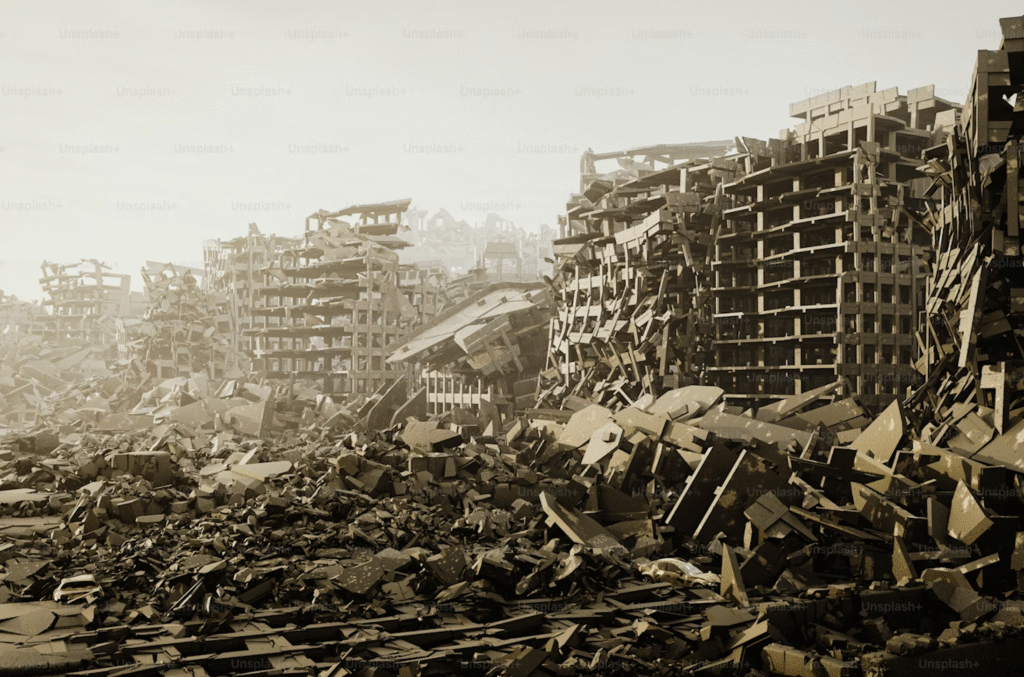Experts estimate varying probabilities for human extinction or severe societal collapse within the coming decades.
Toby Ord, in his book “The Precipice,” assesses a one-in-six chance of existential catastrophe this century, encompassing risks from artificial intelligence and other factors.
Nick Bostrom’s work highlights a median expert estimate of 19 percent for human extinction from global catastrophic risks.
Jared Diamond predicts a 50-50 chance of survival beyond 2050, based on patterns of past civilizations.
Historical research shows civilizations often collapse due to recurring factors. Luke Kemp’s analysis of over 400 societies across 5,000 years indicates that inequality and elite overreach frequently lead to self-termination.
Diamond identifies environmental damage, climate shifts, and poor societal responses as key contributors to downfall.
These patterns suggest modern global interconnectedness could amplify impacts, leaving no recovery options.
Nuclear weapons remain a primary threat, with around 10,000 warheads held by nations including the United States, Russia, China, and others.
Recent assessments place nuclear risk alongside climate change and AI in pushing the Doomsday Clock to its closest point to midnight.
Engineered pandemics and biological threats add to the list, potentially spreading rapidly via global travel.
Kemp suggests that climate change now proceeds at a rate ten times faster than historical extinctions, risking agricultural declines and mass migrations. By 2070, up to two billion people may face extreme heat, halving viable land for key crops.
Developing regions could suffer most from these shifts, though subsistence farming might mitigate some food shortages in Africa.
Artificial intelligence poses risks of misalignment or unintended consequences, with experts warning of potential catastrophe.
In 2023, AI leaders issued statements on the technology’s capacity to cause harm if unchecked. RAND research in 2025 examined AI’s role in exacerbating nuclear or biological threats.
Solar flares, like the 1859 Carrington Event, carry a roughly one-in-ten chance per decade of recurrence, potentially disrupting power grids and communications.
Such an event today could cause widespread blackouts lasting weeks or longer.
Stratospheric aerosol injection offers a potential cooling method but introduces risks like ozone depletion and altered rainfall. Termination shock could accelerate warming if deployment halts abruptly. Studies indicate unpredictable effects on global systems.
Experts continue to monitor these interconnected risks, with ongoing research emphasizing the need for robust preparedness strategies.
Wealthy individuals prepare for these scenarios through bunkers and remote properties. Peter Thiel owns land in New Zealand, while Sam Altman has an agreement to evacuate there with him. Mark Zuckerberg is constructing a fortified compound, reflecting broader trends among tech elites.
Billionaires’ private fortifications highlight disparities in resilience planning across socioeconomic lines. Ultimately, the convergence of nuclear, climatic, and AI threats demands immediate, evidence-based responses to avert potential extinction-level events.
Read the full article here
